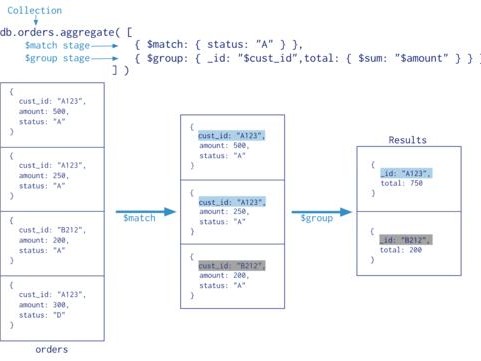52_Pandas处理日期和时间列(字符串转换、日期提取等)
将解释如何操作表示 pandas.DataFrame 的日期和时间(日期和时间)的列。字符串与 datetime64[ns] 类型的相互转换,将日期和时间提取为数字的方法等。

以下内容进行说明。
将字符串转换为 datetime64[ns] 类型(时间戳类型):to_datetime()
时间戳类型属性/方法
使用 dt 访问器批量处理整个列
提取日期、星期几等。
将日期时间转换为任何格式的字符串
转换为 Python 数据帧类型,NumPy datetime64[ns] 类型数组
对于 dt 中未提供的方法
对于日期时间索引
从文件读取时将字符串转换为 datetime64[ns] 类型
如何将 datetime64[ns] 类型指定为索引并将其处理为时序数据以及如何使用,请参考以下文章。

- 26_Pandas.DataFrame时间序列数据的处理
- 27_Pandas按星期,月份,季度和年份的天计算时间序列数据的总计和平均值
以带有以下 csv 文件的 pandas.DataFrame 为例。
import pandas as pd import datetime df = pd.read_csv('./data/sample_datetime_multi.csv') print(df) # A B #0 2017-11-01 12:24 2017年11月1日 12时24分 #1 2017-11-18 23:00 2017年11月18日 23时00分 #2 2017-12-05 5:05 2017年12月5日 5时05分 #3 2017-12-22 8:54 2017年12月22日 8时54分 #4 2018-01-08 14:20 2018年1月8日 14时20分 #5 2018-01-19 20:01 2018年1月19日 20时01分将字符串转换为 datetime64[ns] 类型(时间戳类型):to_datetime()
使用 pandas.to_datetime() 函数,您可以将表示日期和时间的字符串列 pandas.Series 转换为 datetime64[ns] 类型。
print(pd.to_datetime(df['A'])) # 0 2017-11-01 12:24:00 # 1 2017-11-18 23:00:00 # 2 2017-12-05 05:05:00 # 3 2017-12-22 08:54:00 # 4 2018-01-08 14:20:00 # 5 2018-01-19 20:01:00 # Name: A, dtype: datetime64[ns]
如果格式不标准,请在参数格式中指定格式字符串。
print(pd.to_datetime(df['B'], format='%Y年%m月%d日 %H时%M分')) # 0 2017-11-01 12:24:00 # 1 2017-11-18 23:00:00 # 2 2017-12-05 05:05:00 # 3 2017-12-22 08:54:00 # 4 2018-01-08 14:20:00 # 5 2018-01-19 20:01:00 # Name: B, dtype: datetime64[ns]
即使原始格式不同,如果指示的日期和时间相同,则 datetime64[ns] 类型值是等价的。
print(pd.to_datetime(df['A']) == pd.to_datetime(df['B'], format='%Y年%m月%d日 %H时%M分')) # 0 True # 1 True # 2 True # 3 True # 4 True # 5 True # dtype: bool
如果要将转换为 datetime64[ns] 类型的列作为新列添加到 pandas.DataFrame,请指定新列名并分配它。如果您指定原始列名,它将被覆盖。
df['X'] = pd.to_datetime(df['A']) print(df) # A B X #0 2017-11-01 12:24 2017年11月1日 12时24分 2017-11-01 12:24:00 #1 2017-11-18 23:00 2017年11月18日 23时00分 2017-11-18 23:00:00 #2 2017-12-05 5:05 2017年12月5日 5时05分 2017-12-05 05:05:00 #3 2017-12-22 8:54 2017年12月22日 8时54分 2017-12-22 08:54:00 #4 2018-01-08 14:20 2018年1月8日 14时20分 2018-01-08 14:20:00 #5 2018-01-19 20:01 2018年1月19日 20时01分 2018-01-19 20:01:00
时间戳类型属性/方法
pandas.to_datetime() 函数转换的列的dtype是datetime64[ns]类型,每个元素都是Timestamp类型。
print(df) # A B X # 0 2017-11-01 12:24 2017年11月1日 12时24分 2017-11-01 12:24:00 # 1 2017-11-18 23:00 2017年11月18日 23时00分 2017-11-18 23:00:00 # 2 2017-12-05 5:05 2017年12月5日 5时05分 2017-12-05 05:05:00 # 3 2017-12-22 8:54 2017年12月22日 8时54分 2017-12-22 08:54:00 # 4 2018-01-08 14:20 2018年1月8日 14时20分 2018-01-08 14:20:00 # 5 2018-01-19 20:01 2018年1月19日 20时01分 2018-01-19 20:01:00 print(df.dtypes) # A object # B object # X datetime64[ns] # dtype: object print(df['X'][0]) # 2017-11-01 12:24:00 print(type(df['X'][0])) #
Timestamp 类型继承并扩展了 Python 标准库 datetime 的 datetime 类型。
print(issubclass(pd.Timestamp, datetime.datetime)) # True
可以获取年、月、日(年、月、日)、时、分、秒(时、分、秒)、星期几(字符串:weekday_name,数字:dayofweek)等作为属性。
print(df['X'][0].year) # 2017 print(df['X'][0].weekday_name) # Wednesday
还可以使用 to_pydatetime() 转换为 Python 标准库 datetime 类型,使用 to_datetime64() 转换为 NumPy datetime64[ns] 类型。
py_dt = df['X'][0].to_pydatetime() print(type(py_dt)) # dt64 = df['X'][0].to_datetime64() print(type(dt64)) #
timestamp() 是一种以浮点浮点类型返回 UNIX 时间(纪元秒 = 自 1970 年 1 月 1 日 00:00:00 以来的秒数)的方法。如果需要整数,请使用 int()。
print(df['X'][0].timestamp()) # 1509539040.0 print(pd.to_datetime('1970-01-01 00:00:00').timestamp()) # 0.0 print(int(df['X'][0].timestamp())) # 1509539040与 Python 标准库中的 datetime 类型一样,strftime() 可用于转换为任何格式的字符串。请参阅下文,了解如何将其应用于列的所有元素。
print(df['X'][0].strftime('%Y/%m/%d')) # 2017/11/01使用 dt 访问器批量处理整个列
有一个 str 访问器将字符串处理应用于整个 pandas.Series。
- 13_Pandas字符串的替换和空格处删除等方法
提取日期、星期几。
与Timestamp类型一样,年、月、日(年、月、日)、时、分、秒(时、分、秒)、星期几(字符串:weekday_name,数字:dayofweek)等都可以作为属性获得。 在 dt 之后写下每个属性名称。 pandas.Series 的每个元素都被处理并返回 pandas.Series。
print(df['X'].dt.year) # 0 2017 # 1 2017 # 2 2017 # 3 2017 # 4 2018 # 5 2018 # Name: X, dtype: int64 print(df['X'].dt.hour) # 0 12 # 1 23 # 2 5 # 3 8 # 4 14 # 5 20 # Name: X, dtype: int64
也可以使用 dayofweek(星期一为 0,星期日为 6)仅提取一周中特定日期的行。
print(df['X'].dt.dayofweek) # 0 2 # 1 5 # 2 1 # 3 4 # 4 0 # 5 4 # Name: X, dtype: int64 print(df[df['X'].dt.dayofweek == 4]) # A B X # 3 2017-12-22 8:54 2017年12月22日 8时54分 2017-12-22 08:54:00 # 5 2018-01-19 20:01 2018年1月19日 20时01分 2018-01-19 20:01:00
将日期时间转换为任何格式的字符串
当使用 astype() 方法将 datetime64[ns] 类型的列转换为字符串 str 类型时,它会转换为标准格式的字符串。
print(df['X'].astype(str)) # 0 2017-11-01 12:24:00 # 1 2017-11-18 23:00:00 # 2 2017-12-05 05:05:00 # 3 2017-12-22 08:54:00 # 4 2018-01-08 14:20:00 # 5 2018-01-19 20:01:00 # Name: X, dtype: object
dt.strftime() 可用于一次将列转换为任何格式的字符串。也可以使其成为仅具有日期或仅具有时间的字符串。
print(df['X'].dt.strftime('%A, %B %d, %Y')) # 0 Wednesday, November 01, 2017 # 1 Saturday, November 18, 2017 # 2 Tuesday, December 05, 2017 # 3 Friday, December 22, 2017 # 4 Monday, January 08, 2018 # 5 Friday, January 19, 2018 # Name: X, dtype: object print(df['X'].dt.strftime('%Y年%m月%d日')) # 0 2017年11月01日 # 1 2017年11月18日 # 2 2017年12月05日 # 3 2017年12月22日 # 4 2018年01月08日 # 5 2018年01月19日 # Name: X, dtype: object如果要将转换为字符串的列作为新列添加到 pandas.DataFrame,请指定新列名并分配它。如果您指定原始列名,它将被覆盖。
df['en'] = df['X'].dt.strftime('%A, %B %d, %Y') df['cn'] = df['X'].dt.strftime('%Y年%m月%d日') print(df) # A B X \ # 0 2017-11-01 12:24 2017年11月1日 12时24分 2017-11-01 12:24:00 # 1 2017-11-18 23:00 2017年11月18日 23时00分 2017-11-18 23:00:00 # 2 2017-12-05 5:05 2017年12月5日 5时05分 2017-12-05 05:05:00 # 3 2017-12-22 8:54 2017年12月22日 8时54分 2017-12-22 08:54:00 # 4 2018-01-08 14:20 2018年1月8日 14时20分 2018-01-08 14:20:00 # 5 2018-01-19 20:01 2018年1月19日 20时01分 2018-01-19 20:01:00 # en cn # 0 Wednesday, November 01, 2017 2017年11月01日 # 1 Saturday, November 18, 2017 2017年11月18日 # 2 Tuesday, December 05, 2017 2017年12月05日 # 3 Friday, December 22, 2017 2017年12月22日 # 4 Monday, January 08, 2018 2018年01月08日 # 5 Friday, January 19, 2018 2018年01月19日转换为 Python 数据帧类型,NumPy datetime64[ns] 类型数组
可以使用 dt.to_pydatetime() 获得一个 NumPy 数组 ndarray,其元素是 Python 标准库的日期时间类型对象。
print(df['X'].dt.to_pydatetime()) # [datetime.datetime(2017, 11, 1, 12, 24) # datetime.datetime(2017, 11, 18, 23, 0) # datetime.datetime(2017, 12, 5, 5, 5) # datetime.datetime(2017, 12, 22, 8, 54) # datetime.datetime(2018, 1, 8, 14, 20) # datetime.datetime(2018, 1, 19, 20, 1)] print(type(df['X'].dt.to_pydatetime())) print(type(df['X'].dt.to_pydatetime()[0])) # #
NumPy的datetime64[ns]类型数组可以用values属性代替方法获取。
print(df['X'].values) # ['2017-11-01T12:24:00.000000000' '2017-11-18T23:00:00.000000000' # '2017-12-05T05:05:00.000000000' '2017-12-22T08:54:00.000000000' # '2018-01-08T14:20:00.000000000' '2018-01-19T20:01:00.000000000'] print(type(df['X'].values)) print(type(df['X'].values[0])) # #
对于 dt 中未提供的方法
例如,Timestamp 类型有一个返回 UNIX 时间(秒)的方法 (timestamp()),但 dt 访问器没有。在这种情况下,使用 map() 即可。
- 06_Pandas中map(),applymap(),apply()函数的使用方法
print(df['X'].map(pd.Timestamp.timestamp)) # 0 1.509539e+09 # 1 1.511046e+09 # 2 1.512450e+09 # 3 1.513933e+09 # 4 1.515421e+09 # 5 1.516392e+09 # Name: X, dtype: float64
如果要转换为整数 int 类型,请使用 astype() 方法。
print(df['X'].map(pd.Timestamp.timestamp).astype(int)) # 0 1509539040 # 1 1511046000 # 2 1512450300 # 3 1513932840 # 4 1515421200 # 5 1516392060 # Name: X, dtype: int64
对于日期时间索引
在处理时间序列数据时非常有用。有关详细信息,请参阅下面的文章。
- 26_Pandas.DataFrame时间序列数据的处理
- 27_Pandas按星期,月份,季度和年份的天计算时间序列数据的总计和平均值
在示例中,set_index() 用于将现有列指定为索引,为方便起见,使用 drop() 方法删除多余的列。
- 12_Pandas.DataFrame删除指定行和列(drop)
- 22_Pandas.DataFrame,重置列的行名(set_index)
df_i = df.set_index('X').drop(['en', 'cn'], axis=1) print(df_i) # A B # X # 2017-11-01 12:24:00 2017-11-01 12:24 2017年11月1日 12时24分 # 2017-11-18 23:00:00 2017-11-18 23:00 2017年11月18日 23时00分 # 2017-12-05 05:05:00 2017-12-05 5:05 2017年12月5日 5时05分 # 2017-12-22 08:54:00 2017-12-22 8:54 2017年12月22日 8时54分 # 2018-01-08 14:20:00 2018-01-08 14:20 2018年1月8日 14时20分 # 2018-01-19 20:01:00 2018-01-19 20:01 2018年1月19日 20时01分 print(df_i.index) # DatetimeIndex(['2017-11-01 12:24:00', '2017-11-18 23:00:00', # '2017-12-05 05:05:00', '2017-12-22 08:54:00', # '2018-01-08 14:20:00', '2018-01-19 20:01:00'], # dtype='datetime64[ns]', name='X', freq=None)DatetimeIndex 类型索引具有年、月、日(年、月、日)、时、分、秒(时、分、秒)、星期几(字符串:weekday_name,数字:dayofweek)等属性,以及方法如由于提供了 strftime(),因此可以一次处理所有索引元素,而无需通过 dt 属性。
返回类型因属性和方法而异,不是pandas.Series,但如果要在pandas.DataFrame中添加新列,可以指定新列名并分配。
print(df_i.index.minute) # Int64Index([24, 0, 5, 54, 20, 1], dtype='int64', name='X') print(df_i.index.strftime('%y/%m/%d')) # ['17/11/01' '17/11/18' '17/12/05' '17/12/22' '18/01/08' '18/01/19'] df_i['min'] = df_i.index.minute df_i['str'] = df_i.index.strftime('%y/%m/%d') print(df_i) # A B min str # X # 2017-11-01 12:24:00 2017-11-01 12:24 2017年11月1日 12时24分 24 17/11/01 # 2017-11-18 23:00:00 2017-11-18 23:00 2017年11月18日 23时00分 0 17/11/18 # 2017-12-05 05:05:00 2017-12-05 5:05 2017年12月5日 5时05分 5 17/12/05 # 2017-12-22 08:54:00 2017-12-22 8:54 2017年12月22日 8时54分 54 17/12/22 # 2018-01-08 14:20:00 2018-01-08 14:20 2018年1月8日 14时20分 20 18/01/08 # 2018-01-19 20:01:00 2018-01-19 20:01 2018年1月19日 20时01分 1 18/01/19从文件读取时将字符串转换为 datetime64[ns] 类型
从文件中读取数据时,可以在读取时将字符串转换为 datetime64[ns] 类型。 对于 pandas.read_csv() 函数,在参数 parse_dates 中指定要转换为 datetime64[ns] 类型的列号列表。请注意,即使只有一个,也必须列出。
df_csv = pd.read_csv('data/sample_datetime_multi.csv', parse_dates=[0]) print(df_csv) # A B # 0 2017-11-01 12:24:00 2017年11月1日 12时24分 # 1 2017-11-18 23:00:00 2017年11月18日 23时00分 # 2 2017-12-05 05:05:00 2017年12月5日 5时05分 # 3 2017-12-22 08:54:00 2017年12月22日 8时54分 # 4 2018-01-08 14:20:00 2018年1月8日 14时20分 # 5 2018-01-19 20:01:00 2018年1月19日 20时01分 print(df_csv.dtypes) # A datetime64[ns] # B object # dtype: objectdf_csv_jp = pd.read_csv('./data/sample_datetime_multi.csv', parse_dates=[1], date_parser=lambda date: pd.to_datetime(date, format='%Y年%m月%d日 %H时%M分')) print(df_csv_jp) # A B # 0 2017-11-01 12:24 2017-11-01 12:24:00 # 1 2017-11-18 23:00 2017-11-18 23:00:00 # 2 2017-12-05 5:05 2017-12-05 05:05:00 # 3 2017-12-22 8:54 2017-12-22 08:54:00 # 4 2018-01-08 14:20 2018-01-08 14:20:00 # 5 2018-01-19 20:01 2018-01-19 20:01:00 print(df_csv_jp.dtypes) # A object # B datetime64[ns] # dtype: object可以使用参数 index_col 指定要索引的列。
- 03_Pandas读取csv/tsv文件(read_csv,read_table)
在这种情况下,如果参数 parse_dates=True,索引列将被转换为 datetime64[ns] 类型。
df_csv_jp_i = pd.read_csv('./data/sample_datetime_multi.csv', index_col=1, parse_dates=True, date_parser=lambda date: pd.to_datetime(date, format='%Y年%m月%d日 %H时%M分')) print(df_csv_jp_i) # A # B # 2017-11-01 12:24:00 2017-11-01 12:24 # 2017-11-18 23:00:00 2017-11-18 23:00 # 2017-12-05 05:05:00 2017-12-05 5:05 # 2017-12-22 08:54:00 2017-12-22 8:54 # 2018-01-08 14:20:00 2018-01-08 14:20 # 2018-01-19 20:01:00 2018-01-19 20:01 print(df_csv_jp_i.index) # DatetimeIndex(['2017-11-01 12:24:00', '2017-11-18 23:00:00', # '2017-12-05 05:05:00', '2017-12-22 08:54:00', # '2018-01-08 14:20:00', '2018-01-19 20:01:00'], # dtype='datetime64[ns]', name='B', freq=None)读取 Excel 文件的 pandas.read_excel() 函数也有参数 parse_dates、date_parser 和 index_col,因此在读取时也可以进行类似的转换。有关 pandas.read_excel() 函数的信息,请参阅以下文章。
- 50_Pandas读取 Excel 文件 (xlsx, xls)
- 03_Pandas读取csv/tsv文件(read_csv,read_table)
- 06_Pandas中map(),applymap(),apply()函数的使用方法
- 13_Pandas字符串的替换和空格处删除等方法









